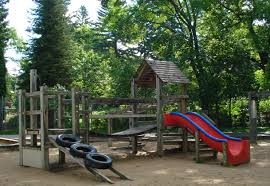Memory
Revisiting the Places of Memory
What happens to memory when we go home again?
Posted May 24, 2016
When it comes to memory, we can go home again. While visiting the places of our past, we can take advantage of our visit to understand more about personal memory.
In a recent self study, I traveled to the actual sites of my old memories and found some intriguing results.
1) Recovering Memories
Visiting places from earlier in our lives can retrieve memories that have not been recalled for many years. Such memories come back vividly and in detail. With its irrepressible retrieval cues, place is truly a universal petite Madeleine, calling up long-forgotten images of the past.
The phrase “recovered memory” is appropriate for this kind of recall. It refers simply to a memory of a past event that has not been recalled for a considerable period of time. This event is not required to be traumatic, and the concept need not be controversial.
Seeing a particular location retrieves old event memories instantly, unmediated by other memories.
Visiting my first elementary school quickly cued the recall of a distinct and happy episode in Kindergarten for the first time in more than 50 years. While visiting a house I lived in as a young adult, I looked at the steep lawn across the street and remembered for the first time in three decades our two elderly neighbors who lived there many years earlier. I also recalled how they would tie their lawn mower to a rope and mow their lawn by pulling the mower up and down with the rope. And I remembered being impressed with how creatively they managed their household tasks.
2) Adding to Personal Memory
Recovered memories contribute new episodes to our early remembered self. In doing so, these memories can be very satisfying – because they add to our collection of self-defining autobiographical memories and reverse the subtracting process brought about by aging and forgetting.
These recovered memories can also restore forgotten lessons drawn from these episodes, what the psychologist David Pillemer calls memory directives.
While walking down the street where I lived as an older child, for example, I saw that the street ended at a large house. I then recalled the family who lived there many years earlier and had successfully fought against the town to keep their house and their land, which then prevented the road from going through. That recall surprised me and added to my autobiographical memory, and also restored a memory directive about standing up for one’s beliefs.
3) Correcting the Mistakes of Memory
Narrative and semantic influences can alter memories that can then be corrected by visiting the actual sites of these memories. For example, I remember the birth of our first child as quick and efficient, including the drive to the hospital. Upon re-visiting, I saw that my memory for the hospital entrance was mostly accurate, but not entirely. I had forgotten it was on a one-way street and that I had to drive all the way around the block to get to the entrance. The extra driving did not fit my narrative of quickness and efficiency, and I did not remember it – until I actually saw the entrance 35 years later.

Another notable type of memory error is the conflating of images from different events at the same location. People and events from different times can be combined, like superimposed imagery – if the events occurred in the same place. Seeing the location clarifies when events from different times have been incorrectly remembered as occurring in the same time frame.
4) Recognizing the Past
Features of locations that have not been recalled for decades can be recognized immediately. This effect may actually inform the serious debate about preserving memorials that are actually on the sites of the memorialized events. Should they be repaired and maintained or allowed to deteriorate naturally? Not maintaining the memorial sites may retrieve memories more effectively for the people who were there.
5) Dormant Memories – and Dreams
One powerful and recurring observation is that long-forgotten places can be the settings of current dreams.

I noticed this upon visiting my high school for the first time in 42 years, when walking to and from my old grade schools, when visiting parks from my childhood. It seemed strangely clear that old memories had served as backdrops in my dreams. An ambitious sleep study could verify this observation, but for now we can conduct our own self studies.
6) Forgotten but Not Gone
You may detect instances where internal memory has become external memory. In my case, the name of a favorite teacher became the name of a new science center. The name of our first landlord became the name of a main road through town.
Representations and Retrieval Pathways
Revisiting the places of our past shows that retrieving a long-term memory involves two factors: 1) the memory representation itself and 2) the retrieval pathway to that memory. Memory representations of personal events can remain vivid and detailed over many years, even while retrieval pathways may become overgrown and inaccessible with disuse. Pathways to a memory can then be reactivated by the retrieval cues at the actual sites of the events. That is how a memory we haven’t thought of for years can return with surprising clarity and detail. When these older memory representations are retrieved, the information is undiminished.
It is also apparent that as encoding and storage systems, we are remarkable – taking in and representing information from the world with no discernible limit. As retrieval systems, however, we are remarkably limited. Revisiting the places of old memories suggests a vast collection of un-remembered events represented in considerable detail.




